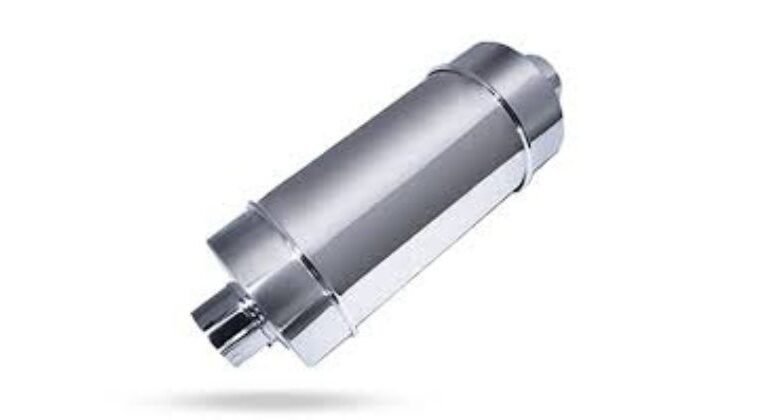
In our quest for cleaner air and sustainable living, the automotive and industrial sectors have witnessed a significant evolution in emission control technologies. One key innovation in this arena is the CPCB approved retrofitted emission control device. This blog will delve into what these devices are, their importance, and the various types available in the market.
What Are Retrofitted Emission Control Devices?
Retrofitted emission control devices are systems or components added to existing vehicles or industrial equipment to reduce harmful emissions. Unlike original equipment manufacturer (OEM) systems, which are built into vehicles during manufacturing, retrofitted devices are installed after the vehicle or machinery has already been produced. These devices can significantly lower the levels of pollutants such as nitrogen oxides (NOx), particulate matter (PM), carbon monoxide (CO), and volatile organic compounds (VOCs).
Why Retrofitting?
The need for retrofitting arises from the growing recognition of air pollution’s adverse effects on health and the environment. Older vehicles and machinery often do not meet modern emissions standards. Retrofitting provides a cost-effective solution to extend the life of these machines while adhering to stricter regulations.
Types of Retrofitted Emission Control Devices
1. Diesel Particulate Filters (DPF)
DPFs are one of the most common retrofitted devices used in diesel engines. They capture and store particulate matter from the exhaust, preventing it from entering the atmosphere. Over time, the accumulated soot is burned off during a process called regeneration, significantly reducing emissions and improving air quality.
2. Selective Catalytic Reduction (SCR)
SCR systems are designed to reduce nitrogen oxide emissions from diesel engines. This technology involves injecting a urea-based solution (commonly known as diesel exhaust fluid) into the exhaust stream. The chemical reaction that occurs within the SCR catalyst converts harmful NOx into harmless nitrogen and water vapor, making it an effective tool for compliance with stringent emissions regulations.
3. Exhaust Gas Recirculation (EGR)
EGR systems work by recirculating a portion of the engine’s exhaust back into the combustion chamber. This process lowers combustion temperatures, thereby reducing the formation of nitrogen oxides. Retrofitting EGR systems can be particularly beneficial for older diesel engines struggling to meet modern emissions standards.
4. Closed Crankcase Ventilation (CCV)
CCV systems manage the gases that escape from the engine’s crankcase. Instead of venting these gases directly into the atmosphere, they are routed back into the intake system, where they can be burned during combustion. This not only reduces emissions but also enhances engine efficiency.
5. Oxidation Catalysts
These devices convert harmful carbon monoxide and unburned hydrocarbons into less harmful emissions by promoting chemical reactions in the exhaust system. They are often used in conjunction with other technologies for enhanced effectiveness.
Benefits of Retrofitted Emission Control Devices
1. Environmental Protection
The primary benefit of retrofitting is the significant reduction in harmful emissions, which contributes to cleaner air and a healthier environment. By equipping older vehicles and machinery with modern emission control technology, we can mitigate the impact of air pollution.
2. Regulatory Compliance
As environmental regulations become increasingly stringent, retrofitting offers a viable solution for industries and vehicle owners to meet legal requirements without the need for costly new equipment. This is particularly relevant for fleet operators and businesses looking to upgrade their machinery.
3. Cost-Effectiveness
Retrofitting is often more cost-effective than replacing older vehicles or machinery. It allows operators to extend the lifespan of their assets while improving performance and compliance, thus providing a better return on investment.
4. Improved Public Health
By reducing emissions of harmful pollutants, retrofitted devices play a crucial role in improving public health. Lower levels of air pollution can lead to decreased respiratory diseases, cardiovascular issues, and other health problems associated with poor air quality.
Challenges and Considerations
While the benefits of retrofitting are significant, several challenges must be considered:
1. Initial Costs
The upfront cost of retrofitting can be a barrier for some operators, especially small businesses. However, this investment can pay off in terms of reduced operating costs and compliance with regulations.
2. Technical Complexity
Installing retrofitted emission control devices often requires specialized knowledge and expertise. Proper installation and maintenance are crucial to ensure that the devices function effectively.
3. Performance Variability
The performance of retrofitted devices can vary based on factors such as vehicle type, engine condition, and driving patterns. Operators must carefully assess their needs to select the most appropriate technology.
Conclusion
Retrofitted emission control devices represent a crucial step in our ongoing battle against air pollution. By enhancing the capabilities of existing vehicles and machinery, we can make significant strides toward a more sustainable future. As technology advances and regulatory pressures increase, the importance of retrofitting will continue to grow, offering a pathway to cleaner air and healthier communities. Investing in these technologies is not just a regulatory necessity; it’s a commitment to a cleaner, more sustainable world.
Also Read (Click here)



